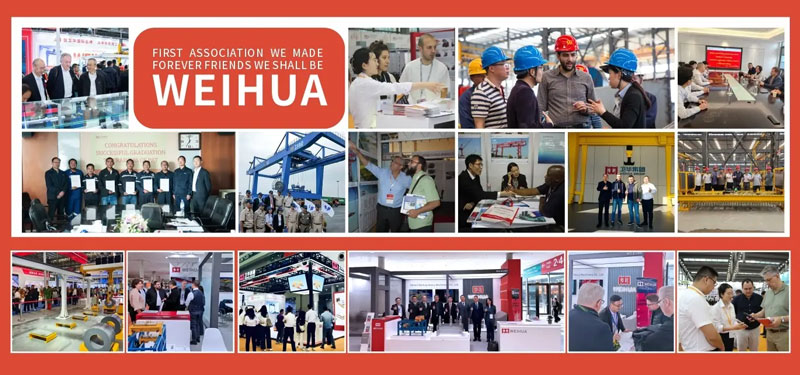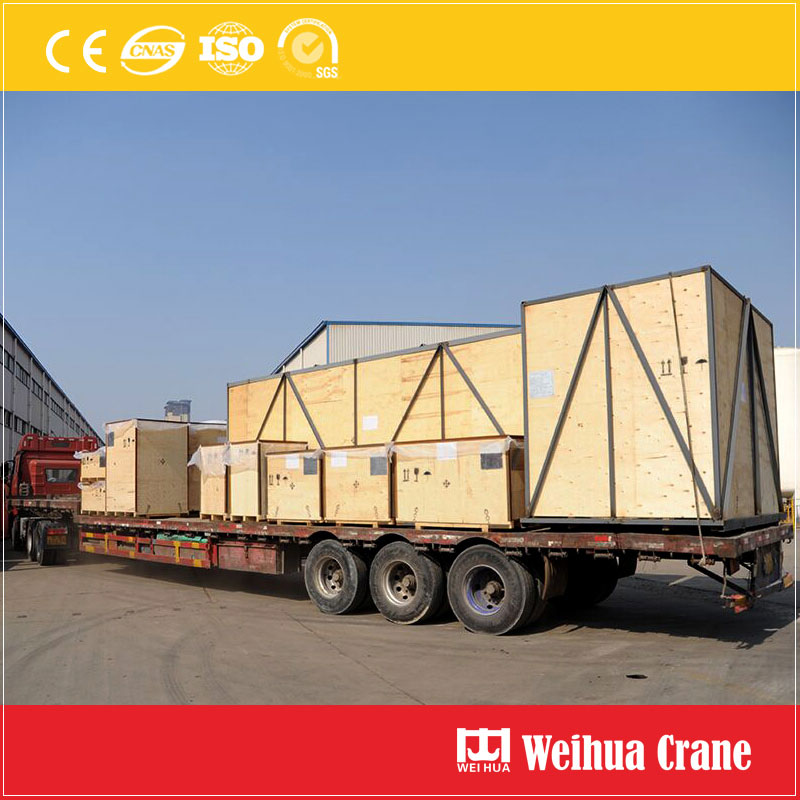什么是轨道式门式起重机?
2025-11-07
如果您曾经访问过繁忙的港口, 集装箱堆场, 或大型工业设施, 您可能见过一台高耸的机器沿着轨道平稳滑行, 精确提升和移动重物. 该机器是轨道式龙门起重机 (RMG) — 旨在提高效率的物料搬运主力, 安全, 和大批量操作的生产力.
在这个博客中, 我们将详细介绍您需要了解的有关 RMG 起重机的所有信息: 他们是什么, 他们如何工作, 他们的主要用途, 与其他起重机相比的优势, 以及选择时要考虑什么. 无论您是从事物流行业, 制造业, 或端口管理, 本指南将帮助您了解为什么 RMG 起重机能够改变重载搬运的游戏规则.
有关 RMG 起重机的更多信息, 请参考: 轨道式门式起重机

一种轨道式龙门起重机 (RMG) 是一种龙门起重机,它沿着固定的轨道行驶,而不是在地面上使用轮胎或车轮. 它由一个大, 桥状结构 (“龙门架”) 由两条或多条腿支撑, 配有起重机和小车系统,可沿龙门梁水平移动以提升, 运输, 并放置重物 (比如容器, 钢卷, 或机械).
与轮胎式龙门起重机不同 (RTG) - 在铺好的路面上自由移动 - RMG 仅限于其铁轨上, 使其成为需要沿固定路径移动负载的应用的理想选择 (例如, 从船到堆场, 或生产线之间). 它们通常用于重型, 精度和速度至关重要的高频起重任务.

RMG 起重机的操作简单但高效, 得益于其模块化设计和自动化 (或半自动化) 控制:
- 1. 铁路系统: RMG 的腿上装有沿着专用钢轨滚动的轮子, 嵌入地面或混凝土基础. 该轨道系统确保平稳, 沿固定路线稳定移动.
- 2. 龙门梁: 水平梁 (龙门架) 跨越工作区域的宽度, 为手推车提供轨道.
- 3. 手推车 & 提升: 小车沿龙门梁行驶, 携带起重机 (升降机构). 提升机使用电缆, 链, 或垂直提升负载的液压系统.
- 4. 控制: 现代 RMG 起重机可以手动操作 (通过龙门架上的驾驶室或遥控器) 或完全自动化 (使用传感器, 相机, 以及无需人工干预即可导航和处理负载的软件). 自动化 RMG 在智能港口和堆场中越来越受欢迎, 因为它们减少了劳动力成本和人为错误.

RMG 起重机用途广泛,可用于多种行业, 但它们在大容量环境中表现出色, 重复举升. 以下是它们最常见的应用:

RMG 集装箱码头起重机 & 端口
这 #1 RMG 起重机用于港口和联运堆场的集装箱装卸. 他们从船上卸下集装箱 (经常与船岸起重机一起工作) 并将它们堆放在堆场中, 或将它们装载到卡车上, 火车, 或驳船. 他们处理 20 英尺的能力, 40英尺, 甚至45英尺的精密集装箱也使其成为全球物流不可或缺的一部分.
在铁路站场内, RMG 起重机在火车和卡车之间转移集装箱, 或将它们堆叠起来临时存放. 它们在这里是理想的选择,因为铁路站场有固定的路径 (与 RMG 的铁轨相匹配), 允许无缝, 高效转移.
钢铁等重工业, 汽车, 建筑业使用 RMG 起重机来移动大型部件 (例如, 钢卷, 发动机缸体, 预制混凝土板) 生产线之间, 存储区, 和航运码头. 它们的高负载能力 (通常 50–1000 吨以上) 使它们非常适合举升超大尺寸, 重物.
大型仓库和配送中心 (特别是那些处理散装货物或重型托盘的人) 使用较小的 RMG 起重机有效地组织和移动库存. 自动 RMG 可以发挥作用 24/7, 减少停机时间并提高吞吐量.

为什么选择 RMG 起重机而不是其他物料搬运设备 (像 RTG 一样, 桥式起重机, 或移动式起重机)? 以下是主要优势:
- 1. 高精度: RMG 沿着固定轨道移动, 消除摇摆并确保准确的负载放置 - 对于堆放集装箱或定位重型机械等任务至关重要.
- 2. 提高效率: 自动化 RMG 可以不间断地连续工作, 它们的水平运动比许多其他起重机更快. 这提高了大批量操作的吞吐量.
- 3. 重载能力: RMG 旨在提升极重的负载 (到 1000+ 吨) 并且跨越广阔的领域 (到 100+ 仪表), 使它们适合大型项目.
- 4. 节省空间: 与桥式起重机不同 (需要天花板支撑), RMG 是独立式的,可有效利用垂直空间. 它们可以堆放比 RTG 更高的负载, 最大限度地利用院子里的存储空间.
- 5. 维护低: 轨道系统耐用且比橡胶轮胎需要更少的维护 (在港口等恶劣环境中会很快磨损). 这减少了停机时间和长期成本.
- 6. 安全: 自动化 RMG 最大限度地减少了人类与重物的交互, 降低事故的风险. 手动 RMG 还具有防碰撞传感器和负载限制器等安全功能.
许多人将 RMG 与 RTG 混淆, 但它们是针对不同的用例而设计的. 这是一个快速比较:

如果您正在考虑投资 RMG 起重机, 以下是需要牢记的关键因素:
- 1. 负载容量: 确定您需要举起的最大重量 (容器, 机械, ETC。). RMG 范围从 50 吨 1000+ 吨.
- 2. 跨度 & 提升高度: 测量工作区域的宽度 (跨度) 以及您需要提升负载多高 (举升高度). 确保 RMG 可以覆盖您的整个工作空间.
- 3. 自动化程度: 确定您是否需要手册, 半自动化, 或全自动 RMG. 自动化系统的前期成本更高,但从长远来看可以节省劳动力成本.
- 4. 轨道安装: RMG 需要专用导轨. 影响铁路安装成本的因素 (混凝土基础, 铁轨) 做预算时.
- 5. 制造商声誉: 选择在您所在行业拥有丰富经验的信誉良好的制造商. 寻找认证 (例如, ISO, CE) 和售后支持.
轨道式龙门起重机不仅仅是大型机器,对于需要高效移动重物的企业来说,它们是一项战略投资, 安全, 准确地说. 无论您是否正在运行端口, 一个铁路站场, 或制造工厂, RMG 起重机可以简化您的操作, 降低成本, 并提高生产力.
A: 标准跨度范围为 20 米到 50 仪表, 但定制设计可以达到 100 大型设施的仪表.
A2: 是的, 大多数 RMG 起重机专为户外使用而设计,配有防风雨组件 (耐腐蚀钢, 密封电子产品).
A3: 安装通常需要 4-8 周, 包括铁路铺设, 龙门装配, 和测试.
A4: 电动 RMG 起重机非常节能, 再生制动系统可在下降过程中回收能量,与柴油 RTG 相比,可降低 20-30% 的公用事业成本.
以 PDF 形式分享: 下载











最新评论